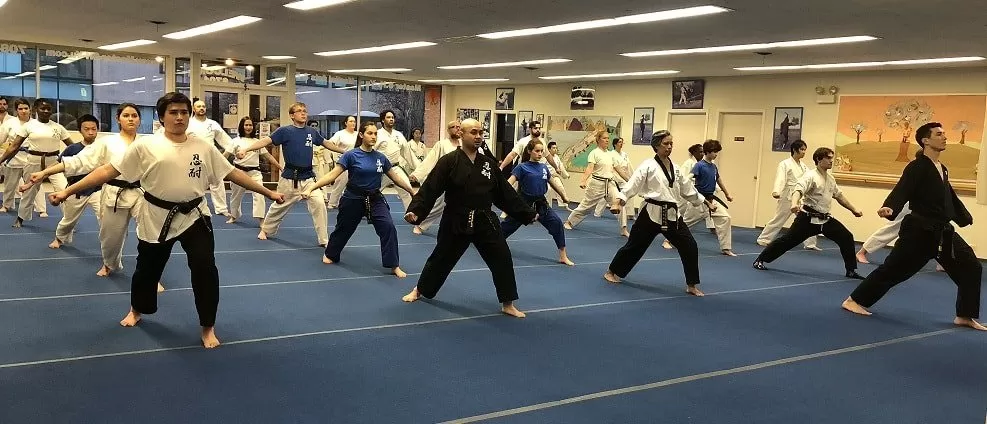Martial arts, the ancient discipline of self-defence and combat, has captured the fascination of individuals worldwide for centuries. From the fluid movements of Kung Fu to the devastating strikes of Muay Thai, martial arts offer a profound exploration of the human body’s physical and mental capabilities. In this article, we delve into the realm of martial arts and explore essential techniques that form the foundation of mastering the art of combat.
The Philosophy Behind Martial Arts
Before we embark on exploring martial arts techniques, it is crucial to understand the underlying philosophy that shapes these disciplines. Martial arts are not merely about physical prowess and fighting techniques; they are rooted in principles such as discipline, respect, and self-control. Click this link to learn more.
The martial arts philosophy emphasises cultivating inner strength, self-improvement, and harmony between mind, body, and spirit. It encourages practitioners to develop mental resilience, humility, and a deep understanding of their limitations. By incorporating these principles into their training, martial artists transcend the physical aspects of combat and strive for personal growth and enlightenment.
Striking Techniques
Striking techniques form a fundamental aspect of martial arts and effectively use punches, kicks, elbows, and knees to strike opponents. Here are a few essential special techniques employed in various martial arts styles:
Jab/Cross (Boxing)
The jab/cross is an essential yet powerful punching combination used in boxing. The jab is a quick, straight punch thrown with the lead hand, while the cross is a strong punch delivered with the rear hand. These techniques emphasise speed, accuracy, and footwork, allowing boxers to strike their opponents while maintaining their defensive stance effectively.
Roundhouse Kick (Muay Thai)
The roundhouse kick is a signature move in Muay Thai, also known as the “Art of Eight Limbs.” This technique involves rotating the hips and kicking with the shin to strike the opponent’s body or head. The roundhouse kick utilises the entire body’s kinetic energy, making it a devastating strike capable of inflicting significant damage.
Side Kick (Taekwondo)
Taekwondo, a Korean martial art, is renowned for its dynamic and high-flying kicks. The side kick, an essential technique in Taekwondo, involves striking the opponent’s body with the heel of the foot while maintaining a sideways stance. The sidekick focuses on speed, precision, and flexibility, making it a formidable offensive and defensive maneuver.
Grappling Techniques
Grappling techniques revolve around close-quarter combat, focusing on holds, throws, joint locks, and submissions. These techniques enable martial artists to control their opponents and gain dominance in ground fighting situations. Let’s explore a few essential grappling techniques used in different martial arts disciplines:
Armbar (Brazilian Jiu-Jitsu)
The armbar is a highly effective submission technique in Brazilian Jiu-Jitsu (BJJ). It involves manipulating an opponent’s arm, hyperextending the elbow joint, and forcing them to submit or risk injury. The armbar requires precise technique, leverage, and timing, allowing a smaller practitioner to overcome a more extensive and stronger opponent.
Double Leg Takedown (Wrestling)
Wrestling, known for its emphasis on takedowns and controlling positions, uses double-leg takedown as a fundamental technique. This move involves driving forward, grabbing both the opponent’s legs and taking them down. Double-leg takedown requires explosive power, timing, solid balance, and an understanding of body positioning.
Sweeps (Judo)
Judo, a martial art derived from traditional Japanese jujutsu, places significant emphasis on throws and sweeps. Sweeps involve using footwork and leverage to unbalance an opponent and take them to the ground. Judo practitioners utilise sweeps to disrupt their opponent’s balance and create opportunities for throws and submissions.
Defensive Techniques
In martial arts, defensive techniques are as crucial as offensive maneuvers. These techniques aim to protect oneself from attacks, deflect incoming strikes, and create openings for counterattacks. Let’s explore a couple of essential defensive strategies used in various martial arts styles:
Parry and Block (Karate)
Karate, a striking-based martial art, emphasises effective defensive techniques to neutralise incoming attacks. Parrying involves redirecting an opponent’s strike to the side while blocking involves using various body parts, such as forearms and shins, to absorb or deflect strikes. Proper timing and positioning are crucial to executing parries and blocks effectively.
Slip and Roll (Boxing)
In boxing, where head movement is paramount, slipping and rolling are crucial defensive techniques. Slipping involves moving the head to evade an opponent’s punches narrowly while rolling involves rotating the torso to avoid attacks and create counterattack opportunities. These techniques require exceptional reflexes, coordination, and understanding of an opponent’s movement patterns.
Training Methods and Mindset
To master martial arts techniques, consistent training and the right mindset are essential. Whether you are a beginner or an experienced practitioner, here are some training methods and mindset tips to help you progress on your martial arts journey:
Regular Practice and Conditioning
Consistency is vital when it comes to martial arts training. Regular practice allows you to develop muscle memory, refine techniques, and improve overall physical fitness. Additionally, conditioning exercises, such as strength training, cardiovascular workouts, and flexibility drills, are crucial in enhancing your performance and reducing the risk of injuries.
Mental Focus and Discipline
Martial arts demand mental fortitude and discipline. Cultivating mental focus and staying present during training sessions can significantly enhance performance. Moreover, embracing discipline and maintaining a positive attitude will help you overcome challenges, setbacks, and plateaus that may arise during your martial arts journey.
Conclusion
Mastering the art of combat through martial arts is a lifelong pursuit that encompasses physical, mental, and spiritual growth. One can build a solid foundation in martial arts by exploring essential striking, grappling, and defensive techniques. Alongside dedicated training and the right mindset, individuals can unlock their true potential, gain self-confidence, and reap the numerous benefits of martial arts beyond combat. So, embrace the art and the discipline, and embark on a transformative journey to become a skilled martial artist.





